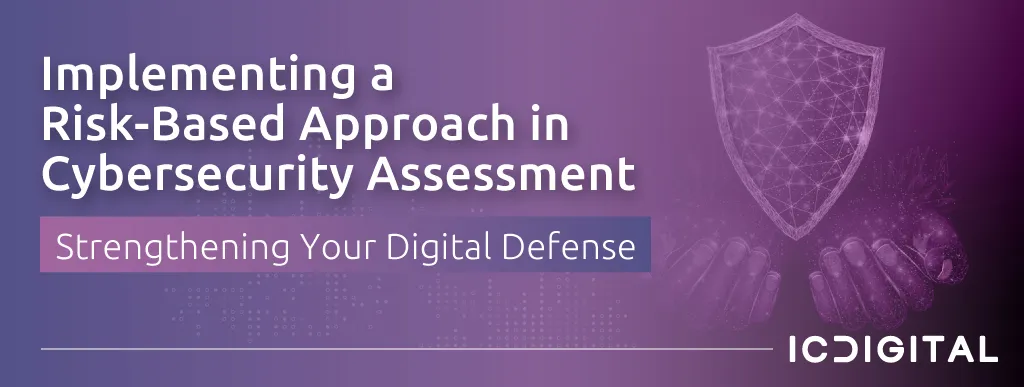
Implementing a Risk-Based Approach in Cybersecurity Assessment: Strengthening Your Digital Defense

Introduction
In the digital battleground where hackers lurk and cyber threats boom, the stakes have never been higher!
As organizations navigate the treacherous landscape of cybersecurity, the need to defend their assets becomes paramount. But how can they effectively prioritize their defenses and allocate their resources wisely?
The risk-based approach in cybersecurity assessment. By embracing this strategic mindset, organizations can uncover hidden vulnerabilities, direct their efforts towards the most perilous threats, and fortify their defenses with surgical precision
Understanding Risk-Based Cybersecurity Assessment
Defining the Risk-Based Approach
A risk-based approach in cybersecurity assessment involves evaluating potential risks, their likelihood, and potential impacts to determine the appropriate security measures. It provides a systematic framework for organizations to understand their risk exposure and develop strategies for mitigation. By doing so, businesses can prioritize their security efforts and focus on areas that pose the greatest threat.
Relationship Between Risk Management and Assessment
Risk management and assessment are interconnected. Risk management involves identifying, analyzing, and mitigating risks, while assessment involves evaluating the effectiveness of security controls and identifying vulnerabilities. A risk-based approach integrates these practices, creating a continuous cycle of improvement and adaptation to emerging threats.
Advantages of a Risk-Based Cybersecurity Assessment Strategy
Identifying Critical Vulnerabilities
By adopting a risk-based approach, organizations can pinpoint critical vulnerabilities that pose the most significant threat to their digital infrastructure. This enables them to prioritize remediation efforts and allocate resources effectively. For example, identifying a vulnerability in a web application that handles sensitive customer data would take precedence over less critical issues.
Focusing on High-Risk Areas
A risk-based approach allows organizations to concentrate their security efforts on high-risk areas. By assessing the likelihood and potential impact of specific threats, they can allocate resources where they are most needed. For instance, a financial institution might prioritize protection against financial fraud, as it poses a high risk to its operations and customers.
Optimizing Resource Allocation
With limited resources, organizations must allocate them wisely. A risk-based approach helps optimize resource allocation by investing in areas that pose the most significant risk. By considering the potential impact of vulnerabilities and threats, businesses can direct their resources strategically, achieving a better return on investment.
Key Elements of a Risk-Based Cybersecurity Assessment Strategy
Risk Identification, Assessment, and Prioritization
A risk-based cybersecurity assessment strategy encompasses three essential elements. First, organizations must identify potential risks, including vulnerabilities and threats. Then, they assess the risks by evaluating their likelihood and potential impacts. Finally, based on this assessment, they prioritize risks to focus their efforts on areas with the highest potential consequences.
Implementing a Risk-Based Approach in Practice
Practical Steps for Implementation
Implementing a risk-based approach in cybersecurity assessment requires a structured and systematic approach. Organizations should develop a risk assessment framework tailored to their specific environment. They can leverage automated tools for vulnerability scanning, penetration testing, and threat intelligence to gather relevant data for risk analysis.
The Role of Risk Assessment Frameworks and Tools
Risk assessment frameworks and tools play a crucial role in implementing a risk-based approach. They provide structure, guidelines, and methodologies to help organizations identify and assess risks effectively and industry-specific frameworks. Utilizing these frameworks streamlines the risk assessment process and ensures comprehensive coverage.
Overcoming Challenges in Implementing a Risk-Based Approach
Addressing Resource Constraints
Resource constraints are a common challenge when implementing a risk-based approach. To overcome this, organizations can leverage automation and invest in tools that streamline the assessment process. This allows them to conduct assessments efficiently, even with limited resources.
Cultural and Organizational Resistance to Change
Organizations may face resistance to change when adopting a risk-based approach. Effective communication is vital in demonstrating the benefits of the approach to stakeholders, fostering a culture that values risk management and cybersecurity. Involving all relevant departments and personnel ensures a collaborative effort.
Best Practices for a Successful Risk-Based Cybersecurity Assessment Strategy
Regular Reassessment and Continuous Improvement
Cybersecurity threats evolve rapidly, necessitating a continuous reassessment of risks. Regularly reviewing and updating the risk assessment helps organizations avoid emerging threats and vulnerabilities. Continuous improvement ensures that the risk-based approach remains effective and adaptive.
Involving Stakeholders and Cross-Functional Collaboration
A successful risk-based approach requires the involvement of stakeholders from various departments, including IT, security, and executive leadership. Collaborating across functions ensures a holistic understanding of risks and enhances the effectiveness of the cybersecurity assessment strategy.
Conclusion
Implementing a risk-based approach in cybersecurity assessment is critical for organisations aiming to strengthen their digital defence. By aligning risk management principles with assessment practices, organizations can identify critical vulnerabilities, prioritize security efforts, and optimize resource allocation. With a comprehensive strategy and ongoing improvement, businesses can strengthen their security posture and safeguard against evolving cyber threats.
